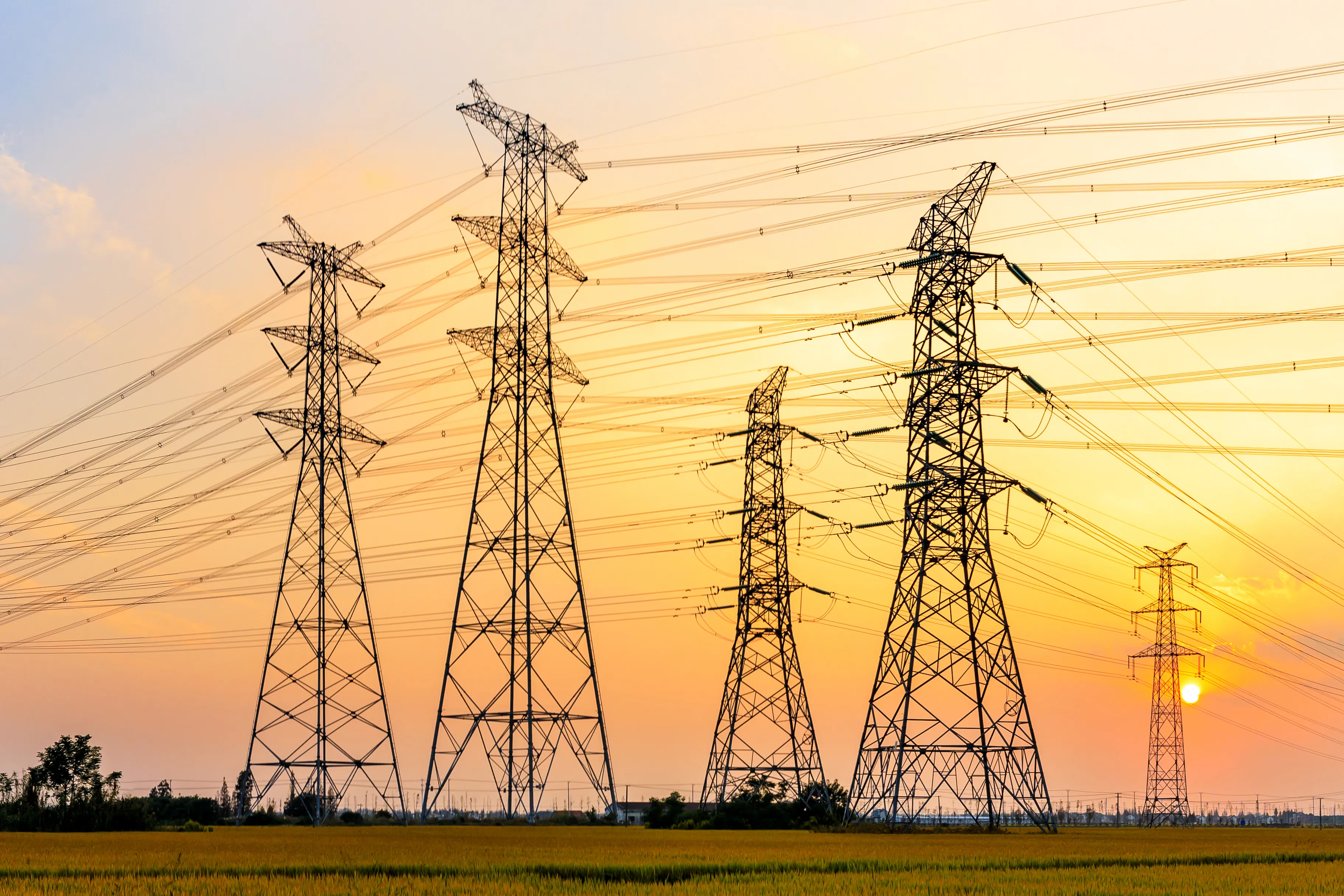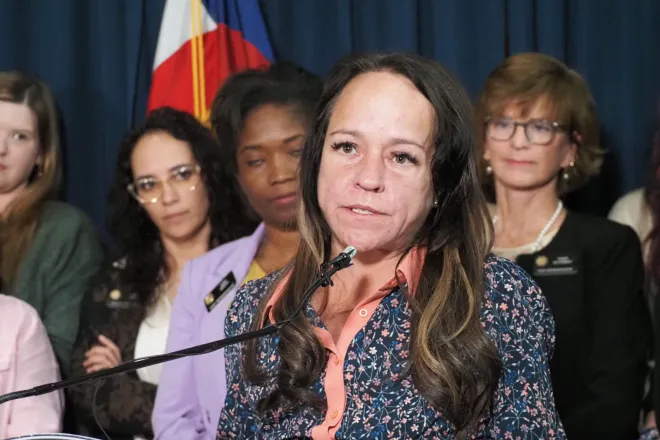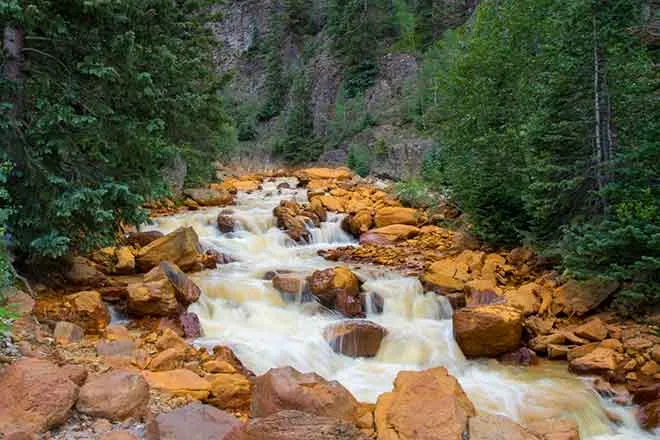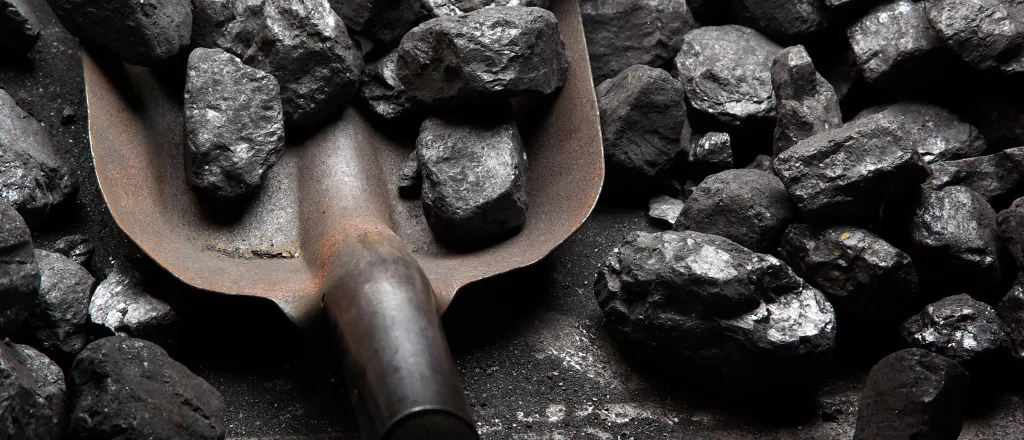
Colorado made plans to close coal plants. Trump agenda could force a reversal.
During the last decade, plans were made to retire two coal-burning units in Colorado, one in Pueblo and the other in Craig, by the end of 2025.
Now, those retirements are in doubt. It’s possible — some think likely — that in December the federal government will order utilities to continue operating the two coal units in 2026.
Tri-State Generation and Transmission Association, the electrical provider for 15 cooperatives in Colorado, operates Craig 1. In an interview on Oct. 7, Duane Highley, the chief executive, said he had a “high degree of confidence, based on what I’m hearing from them today, that unless something changes, we are going to get an order to keep Craig 1 open past the end of the year.”
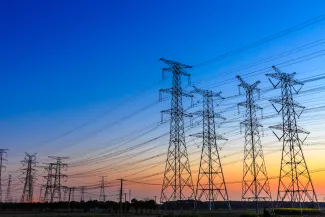
© zhaojiankang - iStock-802436842
Highley had just returned from Washington, D.C., and meetings with officials from both the Department of Energy and the Energy Dominance Council.
Oct. 29, Highley affirmed the same information. “I just talked with the White House this morning, and it’s still progressing.”
Xcel Energy owns and operates Comanche 2. In late August, Pueblo County announced it was seeking federal intervention to keep it operating. On Oct. 31, U.S. Representative Jeff Hurd, whose congressional district encompasses both Craig and Pueblo, sent a letter to the Department of Energy asking it to order the plant to remain open beyond December. The letter also asks the DOE to order Xcel to operate Comanche 3 at full capacity until sufficient replacement generation is online.
Unlike Pueblo County’s request, which was couched as “just transition,” Hurd’s request was premised in the argument that the unit is needed for reliability.
Salient in Hurd’s letter was this statement: Xcel has “warned in formal filings that the state’s current resource plan does not meet industry standard reliability metrics.”
Oct. 24, in brief remarks in Pueblo, Hurd had signaled that would be his argument.
“We’re facing a real reliability crisis here in Colorado,” he said.
He went on to say he hoped that Governor Jared Polis and his administration would recognize that and agree to extend the life of Comanche 2 in light of the unexpected downtime for Comanche 3 in coming months.
“We have a reliability crisis, not only because the demand is going up, but also because unit 3 is down,” he said.
Does a reliability crisis truly exist in Colorado? If so, what caused it? And is federal intervention justified? In other words, has Colorado’s regulation of Xcel fallen short in some fundamental way, as Hurd’s letter and remarks suggest. Or instead, might this be a manufactured crisis, a ploy in the high-stakes poker game between regulators and the regulated?
Trump uses seldom-invoked law
The Trump administration clearly wants to keep coal plants operating. In September, for example, the Department of Energy announced $625 million to “expand and reinvigorate America’s coal industry.”
Part of that mission has been to delay retirement of coal plants or, in some cases, reopen them. This law may will be most pertinent to Colorado.
In late May, the Department of Energy cited a seldom-used provision in the Federal Power Act called 202(c) in ordering the 1,420-megawatt J.H. Campbell coal plant in Michigan to remain open a week before its scheduled closing. A week later, it cited the same law in ordering an oil-and-gas electrical plant near Philadelphia to continue operations. The plant was one day from closing.
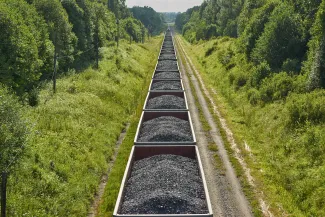
The 1935 law, according to the Georgetown University Law Center, permits the use of emergency authority for only 90 days in the event of war, because of a sudden increase in the demand for electricity, or because of a shortage of electricity. The Department of Energy cited energy shortages as justification for use of 202(c) powers in Michigan and Pennsylvania.
The Georgetown center said such 202(c) orders had not previously been used by the federal government in violation of what the regional grid operator wanted. Colorado has no true grid operator, although Xcel Energy is one of two balancing authorities, The Western Area Power Administration is the other.
E&E News by Politico reported in a Sept. 25 story that the Trump administration was also considering use of a different law, the Defense Production Act, to justify continued operation of mostly uneconomical coal power plants operating across the country.
The same publication on Oct. 28 reported that the DOE had solicited outside legal expertise in “statutory interpretation, regulatory analysis, and challenges to agency actions under the Federal Power Act.” The budget for this outside legal help could run to $50 million.
In Pueblo Oct. 24, at an Action Colorado conference, Hurd reported talking with Xcel Energy folks at the Comanche plant earlier that morning. They told him that demand that had been growing about 0.5 percent a year now has been projected to rise between 3 percent and 7 percent. That stress, said Hurd, a former attorney for Delta-Montrose Electric and other electrical cooperatives, was making “reliable energy a top issue.”
Oct. 31, after Hurd announced his request, the Colorado Energy Office issued this biting response: “The Trump administration already illegally ripped away $600 million dollars for clean energy jobs-creating projects across the state. … It’s important to point out that wind and solar are cheaper for consumers than expensive and often unreliable coal-fired generation, and utility resource planning is subject to state — not federal — jurisdiction.”
That mirrored the statement from Polis provided to Big Pivots in mid-October:
“The Trump Administration wants to drag us backwards into an overreliance on a non-renewable resource creating a larger economic burden on the state and consumers. Orders like these would hurt Colorado ratepayers, and harm rural communities across the West who could be forced to absorb the unnecessary excess costs required to keep these unreliable plants operational.”
Looming in the background is the alliance of President Donald Trump with fossil fuel interests. In 2016, campaigning in Grand Junction, he vowed to bring coal back. He failed. Instead, prices of renewable energy plummeted and utilities readied plans to close coal plants.
In May 2024, according to the Washington Post, Trump told oil, gas and other fossil fuel executives that if they delivered $1 billion to his campaign, he’d help them out. All available evidence indicates he got less than asked but still substantial amounts, primarily from oil and gas.
Who decides what is needed?
The National Energy Dominance Council — one of the agencies visited by Highley on his trip to Washington — was created by Trump in February. In a story published in August, Politico said the new agency’s mission is to make the United States “energy dominant” by providing affordable, reliable energy to Americans while still generating enough electricity to power the boom in artificial intelligence.
Chris Wright, a Coloradan, is secretary of Energy and deputy director of the Energy Dominance Council. He was formerly the CEO of Liberty Energy, an oil and gas production services company based in Denver.
Highley said that Tri-State itself has excess generating capacity and does not need to continue operations of the coal-burning unit at Craig to ensure reliability. Supplies in the Western Interconnection Grid, of which Colorado is a part, have been tightening.

Sharing of electricity, however, remains hampered by lack of adequate transmission and organized markets. This is widely recognized in Colorado and beyond. The Western Governors Association held a conference in Denver just days before Hurd’s letter devoted to transmission.
Keeping the coal unit in Craig operating beyond its scheduled retirement will pose logistical challenges. The order under the 202(c) provision cannot be delivered until late this year, shortly before retirement. Further, the law allows orders for only 90 days, although they can be renewed.
Tri-State would have to procure the coal for the plant and have the workers in place to operate the plant. It has already announced plans to close the ColoWyo Mine, located about 20 miles south of Craig, late this year. However, Trapper Mine continues operations near the Craig plant as does Peabody’s Twenty Mile Mine between Hayden and Oak Creek.
Cost may be a greater issue. In January 2020, Highley announced Tri-State’s plans to get out of coal in Colorado. The reason, aside from state mandates, was cost. Coal has become the expensive fuel.
“How do we keep a coal plant operating for reliability of the overall Western Grid? Tri-State does not need it for our needs,” said Highley. “We have surplus capacity. But overall the Western grid does have some concerns about resource adequacy. So how do we keep a unit open that maybe isn’t in our financial interest but that the government says is in the national interest?”
“I’ve been asking, ‘Who’s going to pay for running this unit if we get an order that says it has to keep running,’” added Highley. “So far, no one has pulled out their checkbook. I hate for this burden to be placed on rural America. You know, our members, including farmers and ranchers, many are struggling to pay their bills today.”
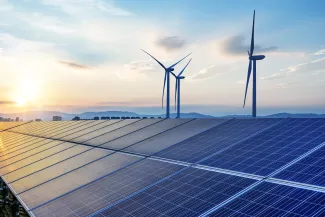
Xcel Energy has been consistently restrained in its comments. It points to retirements approved by Colorado regulators: Comanche 2 in 2025, Hayden 2 in 2027, and Hayden 1 in 2028, followed by the retirement of Comanche 3 by the end of 2030. It is also replacing coal with gas at Pawnee.
In a brief interview Oct. 29, Robert Kenney, the president of Xcel’s Denver-based division, Public Service Co. of Colorado, added a little more depth.
“We’ve been preparing to retire that plant (Comanche 2) by the end of the year since 2018, and so we’ll have to make sure that it is prepared to be able to run beyond the end of the year,” he said. “That’s going to obviously require some maintenance and some upkeep. If we get an order telling us to do that, we’ll have to examine the actual language of the order, understand what it requires of us. But we’ll comply with the law.”
Xcel also issued a statement on Oct. 31: “We are in regular conversations about Colorado’s energy future with various stakeholders, including federal, state and local elected officials. We are aware that there are members of the community that would like to see the plant’s life extended. ”
In ordering that fossil fuel plants remain open, the Trump administration assumes their value in providing baseload generation. In practice, no plants — coal, gas, and nuclear — operate without downtime for maintenance.
Unexpected outages can occur. Few coal plants have been as trouble-plagued as Xcel’s 750-megawatt Comanche 3. It was offline about 90 days each year during its first decade of operations, which began in 2010. Beginning in 2020, the unit was down for more than a year. Outages have been frequent since then.
In August, the unit went down again. This time, it’s not expected to resume operations until June 2026.
Comanche 2 — the unit scheduled for retirement in December — has had no comparable problems. It went online in 1975. Craig 1 has also had relatively few problems since operations began in 1980. They’re not 100 percent, but neither have they been lemons.
Plans laid in past decade
Retirements of both Comanche 2 and Craig 1 have been planned for years. In the case of Craig 1, Tri-State and its co-owners — Fort Collins-based Platte River Power Authority, Xcel Energy and also Salt River Project and PacifiCorp — were sued because of the contributions of the coal-burning units at Craig and Nucla to pollution that impaired air quality in the Mount Zirkel and other designated wilderness areas and national parks on the Western Slope. This deteriorated air quality violated the regional haze standards set by the EPA.
Tri-State and its co-owners could have installed equipment limiting emissions of nitrous oxide by 2021. Instead, they agree to close Craig 1 by 2025. Costs of wind, especially, but also solar were then plummeting, making continued operations of coal less attractive.
Comanche 2’s closing was planned in 2018. The order by the Colorado Public Utilities Commission said Xcel would close the 335-megawatt unit “no later than the end of 2025.”

© iStock
That PUC decision had been preceded by a response to Xcel’s request for bids that in December 2017 had caused slackened jaws — not just in Colorado, but across the nation. The PUC decision noted that Xcel’s solicitation had “garnered an exceptional number of diverse and low-cost bids.” This, the PUC commissioners said, “provides a rare opportunity to capture some of the lowest resource bids ever experienced in Colorado.”
The Trump Administration wants to drag us backwards into an overreliance on a non-renewable resource creating a larger economic burden on the state and consumers.
Of note were the low cost of wind but also, for the first time in Colorado, utility-scale battery storage. The approved plan called for Xcel to purchase two existing gas plants.
Among the signatories to that PUC decision was then-Commissioner France Koncilja, now Pueblo County’s attorney in Comanche matters.
The PUC decision was issued in August 2018, several months before the election of Polis, who had run for governor on a platform of renewable energy. He had launched his campaign in Pueblo at the Solar Roast Coffee.
A month after the election of Polis, Xcel Energy summoned many to the Denver Museum of Nature and Science for a major announcement: It believed it could achieve an 80 percent reduction in greenhouse gases by 2030 (compared to 2005 levels) and 100 percent by 2050 in the eight states in which it operated.
Polis spoke, too. “Elections have consequences,” he said.
Xcel’s goals were enshrined in state legislation in May 2019.
The 2021 electric resource plan filed by Xcel Energy continued this planning. By October 2024, when Xcel filed its latest resource plan with the PUC, it noted an “inflection point” in its energy transition from coal.
From an average annual growth in demand of 0.7 percent during the previous five years, it was projecting a compounded annual demand growth of 4 percent from 2023 through 2031 in its base case. Even in a low-growth scenario, demand would grow 2.8 percent annually,
Meeting this demand, explained Xcel’s Jack Ihle, an Xcel vice president, would require Xcel’s generating capacity to expand from its existing 7 gigawatts to somewhere between 7.6 GW and 9.6GW by the end of 2031. Keep in mind Comanche 3’s capacity: three-quarters of one gigawatt.
The document mentioned “resource adequacy” more than a dozen times.
Resource adequacy
Worries about “resource adequacy” have mounted during the last two years. The Seattle Times reported on Oct. 21 of growth in electricity demand of 0.9 percent three years ago in the Pacific Northwest to now 3.2 percent per year. Energy + Environmental Economics, a consultant, found the most probable occurrence for a blackout would be a days-long cold snap during a year of relatively little hydropower production. That, however, was unlikely in the next five years.
Colorado has had no blackouts due to inadequate resources. Xcel, however, issued an orange alert on Aug. 7, warning its 1.5 million electrical customers in Colorado of a remote possibility for outages. A PUC staff member who analyzed the causes reported several problems, including less solar production than had been expected. That report also found that Xcel had 11 fossil fuel plants that had some amounts of unplanned outages. Of those, 80 percent were among coal plants.
Proponents of fossil fuel generation insist that coal plants will be needed for baseload generation. Undeniably it’s more reliable than solar power. Except, as in the case of Comanche 3, when it is missing in action for a year at a time. But all forms of generation — coal, natural gas and nuclear, too — have down time.
Do we have enough reserve margins in the grid? Trump in April directed the Department of Energy to analyze current and reserve margins of the nation’s three electrical grids. In issuing the report in July, the press release issued by the DOE said the analysis had revealed that retirement of fossil fuel plants and delays in adding new “firm capacity, driven by the radical green agenda of past administrations,” would lead to a surge in power outages and a growing discrepancy between electricity demand and supply. It cited growth in demand from data centers as a major cause of demand growth.
Green-leaning groups were skeptical. In a July appraisal, Ric OConnell, an analyst from GridLab, called the DOE report “problematic” because of questionable assumptions. Advanced Energy United, in August, said the DOE analysis was “rather a protocol for pursuing a preferred solution to addressing resource adequacy needs.”
Colorado Attorney General Phil Weiser joined eight other states in asking for a rehearing. Their motion mentioned retirement of both Craig and Pueblo this year.
“These retirements have been thoroughly vetted by state and regional authorities and approved only following an extensive examination of cost considerations and reliability impacts,” the motion said.
Xcel has been sounding an increasingly loud alarm about resource adequacy. A Feb. 11 letter from three senior officers at Xcel Energy’s Minneapolis headquarters warned that Colorado’s “resource planning process is proving too inflexible to meet needs in a dynamic environment.”
Xcel no longer met industry standard reliability metrics nor the reliability assumptions used in the planning process several years before, the letter warned. Even addition of a third gas-burning plant left Xcel in a “suboptimal position.”
Citing the Western Electricity Coordinating Council, Xcel reported that 76 percent of proposed resource additions from 2018 through 2022 had come online. In 2023, that figure fell to 53 percent. The rest were delayed or cancelled.
“The state of play is not only about load growth; generation retirements are outpacing new resources coming onto the grid. New resources are being delayed due to various factors and will aggravate the situation in the coming years. Demand is increasing, across the West.”
A different conclusion was drawn by the Colorado Energy Office in a report issued July 1.
Colorado utilities, the report said, have “adequate capacity to meet customer electricity needs.” That was an overall summary, though. Xcel’s component of that report mentioned that the utility expected to have a capacity shortfall of 88 megawatts in 2026, growing to 1,000 megawatts shortfall in 2030.
Two former PUC commissioners have also weighed in to support delayed retirements of coal plants. There are the comments and filings of Koncilja, a commissioner from 2016 to 2020, on behalf of the economic needs of Pueblo County. The county, with the notable exception of its steel plant, gets electricity from a utility other than Tri-State.
John Gavan, a commissioner from 2018 to 2022, has been more broadly raising concerns about resource adequacy. He cites the projected demands of data centers but also notes that some electric providers in Colorado are unregulated by the state in their resource planning, unlike Xcel and Tri-State.
The PUC regulates Xcel, Black Hills, and Tri-State but not municipal providers and other cooperatives, among them United Power, CORE Electrical Cooperative, and Holy Cross Energy.
Whatever concerns there were before, the Xcel’s report to the PUC in early October added urgency.
Environmental community
The environmental community in Colorado says the Trump administration has weak justification in using the 202(c) clause in the Federal Power Act. They point out that Colorado’s PUC has a rigorous process for ensuring that utilities have sufficient reserve margins. Xcel itself, in its October 2024 filing, noted Colorado’s “gold standard” for resource planning — although that was said while asserting the need to create a “new gold standard.
Groups also point out that peak demand in Colorado typically comes in summer, not winter, when the orders for the units at Craig and Pueblo may be issued.
“202(c) isn’t intended to be used for long-term resource planning,” said Matthew Gerhart, senior attorney for the Sierra Club at its Denver office. “It’s intended for use in war-time or similarly brief, sudden emergencies like natural disasters. Even if it were true that there are resource adequacy issues, 202(c) isn’t the proper vehicle for addressing those issues.”
For that matter, he said, electricity cannot be put on trucks like bananas or iPhones and shipped anywhere in the country. In electricity, Colorado remains much like an island, with limited transmission to other utilities in the West. Market mechanisms for electricity sharing are just now getting short, stubby legs — although that will change dramatically in the next five years.
“So, even if there were an electricity shortage in, say Washington or Idaho or California, that doesn’t mean that keeping Craig 1 online will help, given the lack of a West-wide electricity market and the transmission limitations and congestions,” Gerhart said.
Sarah Keane, an attorney with Kaplan Kirsch who represents Colorado Communities for Climate Action and others, pointed out that the need is more than bulk power. Technologies that have flexible ramping, including natural gas, can better respond to peak demands than can coal.
Erin Overturf, clean energy director for Western Resource Advocates, said if the grid faces an actual emergency, the Trump administration would be using every tool it had. Instead, it has been doing everything it can to stop renewable energy development. She calls it a “manufactured emergency.”
And, in the case of Craig 1, there is that sticky matter of complying with the federal laws limiting regional haze.
In Arizona, cost was the fulcrum for this issue, not environmental needs.
The Arizona Corporation Commission, that state’s equivalent of the Colorado PUC, pushed back at calls by Republican state legislators to the federal government to bring mothballed coal plants in Arizona out of retirement.
Kevin Thompson, the chair of the commission, said in a May 30 posting that bringing the recently closed Cholla plant in northern Arizona into compliance with federal environmental standards would cost a “staggering $1.9 billion — a cost to be borne by ratepayers of its owner, Arizona Public Service.”
In Arizona, the commission members are elected, not appointed by the governor, as is the case in Colorado. Thompson campaigned with the boast that he had “stopped the Green New Deal.”
“Managing highly intricate systems like our electrical grid is far more complicated than a slogan on a bumper sticker,” Thompson said.



